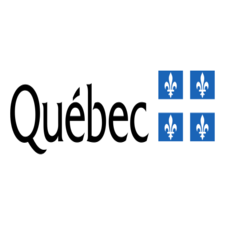Subdivision de recensement
Type of resources
Keywords
Contact for the resource
Provided by
Years
Representation types
Update frequencies
status
Service types
-

Geographic database containing the result of Statistics Canada's __2016 Census geography harmonization process. __ Harmonization is a process of editing geographic boundaries in order to adjust them spatially to the official geographic base. This work was carried out in 2016 by the Institut de la Statistique du Québec (ISQ) according to the official provincial geographic base. A detailed project report presents in two parts the coherence between the geography of the 2016 census and the geographical code of Quebec, then presents the process of harmonizing this geography. __The content of the resulting database is detailed there (page 22) __, as well as the description of the attributes (pages 27 to 29). **This third party metadata element was translated using an automated translation tool (Amazon Translate).**
-

Geographic database containing the result of Statistics Canada's __2021 Census geography harmonization process__. Harmonization is a process of editing geographic boundaries in order to adjust them spatially to the official geographic base. This work was carried out in 2022 by the Institut de la Statistique du Québec (ISQ) according to the official provincial geographic base. A metadata sheet shows the process of harmonizing this geography. __The content of the resulting database is detailed there (page 2), as well as the description of the attributes in the appendix (pages 7 to 11) __. **This third party metadata element was translated using an automated translation tool (Amazon Translate).**
-
L'indice du bien-être des collectivités (IBC) est une méthode qui permet d'évaluer le bien-être socioéconomique des collectivités canadiennes. Divers indicateurs socio-économique de bien-être soit l'éducation, l'activité, le revenu et le logement, sont dérivés à partir du recensement de la population de Statistique Canada et combinés afin de produire un 'score' de bien-être pour chaque collectivité. Ces scores sont employés pour comparer le bien-être au sein des collectivités des Premières nations et inuites au bien-être observés dans les autres collectivités canadiennes. Des valeurs pour les indicateurs peuvent être manquantes pour une collectivité en raison de la non-participation au recensement, de données dont la qualité est insuffisante ou de la taille insuffisante de la population. Pour plus de renseignements sur le sujet, visitez http://www.aadnc-aandc.gc.ca/fra/1100100016579/1100100016580.
-

The Community Well-Being (CWB) Index is a method of assessing socio-economic well-being in Canadian communities. Various indicators of socio-economic well-being, including education, labour force activity, income and housing, are derived from Statistics Canada's Census of Population and combined to give each community a well-being "score". These scores are used to compare well-being across First Nations and Inuit communities with well-being in other Canadian communities. Indicator values may be missing for a community because of non-participation in the census, inadequate data quality, or insufficient population size. For more information on the subject, visit https://www.sac-isc.gc.ca/eng/1100100016579.
 Arctic SDI catalogue
Arctic SDI catalogue